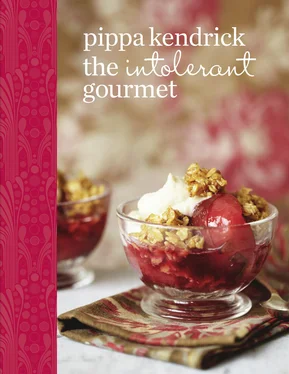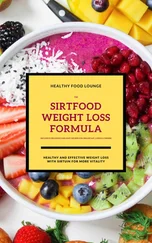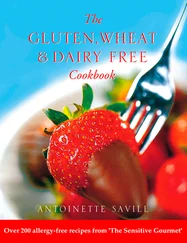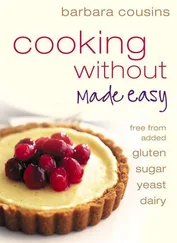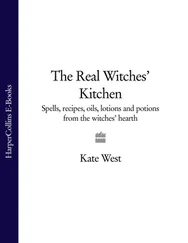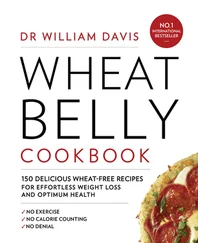Gluten-free grains
There is a common misconception that all grains contain wheat, but this is not so. There are an abundance of delicious grains that can replace wheat in a whole range of dishes.
Basmati rice, white and brown: ideal for use as an accompaniment to numerous dishes. Clean in flavour, basmati has the advantage of being quick to cook. I use it to stuff peppers and squash, in pilaffs and even to make rice pudding.
Brown rice, short-grain: a wonderful wholefood and natural detoxifier. Rich and nutty in flavour, it can be used as an accompaniment to many dishes and in place of white rice in risotto, paella and salads.
Buckwheat: not in fact a grain but a plant related to rhubarb. With a strong and earthy flavour, it can be used to make salads, while its flour is traditionally used for making pancakes and noodles.
Maize: otherwise known as polenta or corn, maize is a substantial grain that can be cooked with water or stock to produce a thick and creamy paste, or left to chill and then cut into slices and fried. Naturally golden in colour, it has a slightly sweet flavour, making it useful for baking cakes.
Millet: a strong-tasting grain often used in soups. It cooks in much the same way as rice and so can be used in any recipe where you would normally use rice.
Oats: a wheat-free food, oats can be tolerated by some coeliacs and gluten intolerants. Although oats contain a protein similar to that of gluten, it is the way that they are processed that really affects their gluten content. You can buy pure oats (meaning uncontaminated) that have been milled in a gluten-free environment, making them suitable for most gluten-free diets. The best gauge is to trust your instincts, listen to your body and avoid them if you feel that they have a negative effect.
Quinoa: actually a fruit rather than a grain, this can be used in much the same way as you would rice. Quinoa is both delicious and a great source of protein – I can’t recommend it highly enough. With a slightly nutty texture, it benefits from the addition of stock or seasoning as it readily absorbs flavours.
Baking aids
All good baking requires some form of catalyst to help it leaven and cook well. With the removal of gluten, milk, butter and eggs from the list, it is really important that your remaining ingredients are up to the job! Using natural binders and thickeners is the way to go and there are lots of good-quality varieties on the market.
Arrowroot: a natural thickener. You can use it to thicken sauces and make glazes as it leaves a very clear sheen.
Baking powder: helps breads and cakes to rise. While generally gluten-free, it is always worth checking the label first – and to make certain that the brand you’re buying is aluminium-free too.
Bicarbonate of soda: a natural leavening agent activated when it comes into contact with warm liquids. It is an ideal addition to intolerance-friendly cakes.
Cornflour: also known as cornstarch and based on maize. It helps to thicken sauces and custards.
Xanthan gum: a plant gum that acts like the gluten found in wheat. Xanthan gum is the holy grail of allergy-friendly baking; it helps breads come together, pastry to roll and flatbreads to bend. It is the must-have staple of any allergy-friendly storecupboard.
Following the recipes
The recipes in this book are designed to work together – you can choose a selection of dishes from each section within one season and they will blend together to create a harmonious menu. When following the recipes, however, you’ll need to bear in mind that allergy- and intolerance-friendly ingredients often don’t work in the same way as their allergenic counterparts. For example, gluten-free flours are often far more absorbent than wheat flour and so require different quantities of liquids and fats to combine with them. Equally, using sunflower margarine as a replacement for butter is a useful and easy alternative, but margarine is simply a blend of vegetable oils and so when heated or over-whipped, its stability can change and affect the end result. When you cream the margarine and sugar in a baking recipe you should use a wooden spoon and lightly cream the mixture by hand, until incorporated. Beating the mixture too hard or for too long, and/or using an electric whisk, can cause the margarine to separate, which will result in an oily or ‘fried’ texture in your baking.
The particular blends of flours and the other substitutes (whether milk, egg or butter) that I use have been specifically chosen, from personal trial and error, to create the best possible results. For that reason I would always recommend that you use the ingredients suggested as I cannot guarantee the same success if you use your own substitutions. That being said, experimentation certainly helped me, and so if you want to adapt the recipes using your own choice of ingredients, then go right ahead. Just be aware that you may have to adapt other parts of the recipe too.
Cooking notes
Fan oven temperature: if you have a fan oven, please reduce the temperature given in the recipe by 20°C/70°F.
Stocks: if not using homemade, please refer to Products and Stockistsfor details of intolerance-friendly varieties of fresh stock, stock powder and stock cubes.
Teaspoon/tablespoon measures: 1 teaspoon = 5ml/½fl oz; 1 tablespoon = 15ml/½fl oz.

Spring
Spring imbues us with renewed energy and enthusiasm, and spring cooking should reflect this: we can say goodbye to the rich stews, hearty pies and warming soups of winter and reintroduce colour and crunch to our dishes. The Chicken, Watercress and Quinoa Salad, for instance, offers a lemony zing and seasonal, peppery bite, while the Herbed Lamb on a Bed of Leeks and Cannellini Beans combines tender spring lamb with the mellow flavour of softened leeks to ring in the season. The fresh, tangy theme carries through to the puddings: in the Rhubarb Streusel Tart the intense, sharp flavour of rhubarb is softened by the rich pastry and buttery, ginger crunch of the streusel topping. All the recipes in this section make the most of what’s in season to embody this revitalising time of year.
Carrot and Coriander Soup
Soup is one of life’s nurturers; it both sustains and comforts, warming one in body and soul, whatever the weather. For me, the best soups are the simplest: take some good-quality ingredients and cook them together slowly and you can’t go wrong. This wonderfully vibrant soup is just the thing for a spring lunch; fruity and fragrant, and served with a slice of my Quinoa Bread, it will brighten up any day.
Serves 4–6
—
1½ tbsp olive oil
1 large onion
1 potato (unpeeled)
700g/1½lb carrots
1.2 litres/2 pints vegetable stock
A bunch of coriander
Juice of ½ orange
Sea salt and freshly ground black pepper
Pour the olive oil into a large saucepan and place over a medium heat. Roughly chop the onion and add to the oil, cover with a lid and allow it to sweat for 4–5 minutes or until softened and beginning to turn translucent.
Chop the potato into 1cm/½in cubes and add to the onion. Cover again with the lid and cook for around 5 minutes, stirring frequently, until the potato has taken on a light sheen and is slightly softened.
Halve the carrots lengthways and chop into half-moon segments, then add to the potato and onion, season with salt and pepper and leave to cook for about 15 minutes, covered but stirring frequently, until the carrots and potato are tender.
Add the stock to the vegetables and bring to the boil, then reduce the heat to low and leave to simmer for 10 minutes.
Читать дальше
